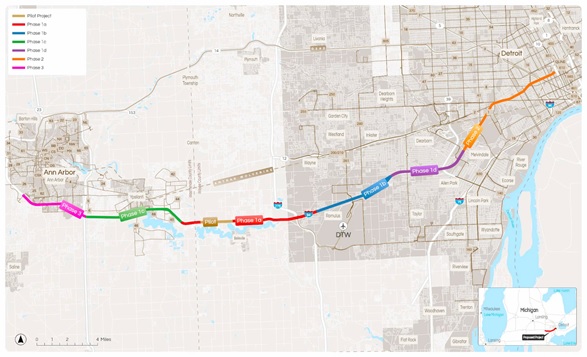Disclaimer
Written by Bhragan.Bhragan is a Civil Engineer and a writer for Last Week in ConTech, a curated publication which helps you stay ahead of the curve in construction technology by summarising the most important news, trends, startups and insights.
Bhragan
 | Last Week in ConTech,
| Last Week in ConTech,
Last Week in ConTech we saw a new trend. Transportation startups are delivering infrastructure solutions to grow adoption within their core business. They are finding that the bottleneck for transportation innovation is not technology but rather infrastructure.
An example is Blusmart, an Indian electric vehicle (EV) ride hailing service which just raised $24m. Rather than follow the industry in building their own EVs, they are deploying the capital to build charging hubs. Their thesis is that the largest bottleneck for EV adoption (and increasing supply on their platform) is infrastructure not the underlying technology.
The old playbook would be to wait for government investment to build the infrastructure. But governments are unwilling to spend taxpayer’s money on what is still speculative infrastructure in the probability of demand. They want pilots, proof of concepts and validation before investment. This stymies infrastructure innovation and uptake of new transportation solutions. However we are starting to see alternatives.
In 2022 Michigan passed a new law. It authorized their Department of Transportation (DoT) to collaborate with technology partners to modernize roads and unlock the automated driving experience.
You see, autonomous vehicles (AV) are held back by outdated infrastructure technology. To support them we need a host of embedded solutions. From Intelligent Transportation systems for network level guidance to vehicle to infrastructure (V2I) communication to inform AVs of changed traffic conditions or road works.
Michigan DoT recognized that by partnering with startups they could pilot, test and prove concepts before investing taxpayer money in deployment.
And it’s working.As a result of this forward-thinking approach, startups like Cavnue can build a first of its kind road in Michigan embedding new technology into the infrastructure during construction. The funding comes from Venture Capitalists betting on a new future which requires the underlying infrastructure to be realized. This means they don’t make their return directly from the infrastructure but from investing in the startups which will capture value from the changed environment.

Proposed segment of Interstate 94 which will serve as the US’ first corridor of tech-enabled infrastructure for connected and automated vehicles.
Cavnue’s project is just one example of how startups are leading the way in innovative infrastructure development and it’s where the future of civil engineering and infrastructure is going. A new class of innovative projects not driven by governments but rather by startups funded by venture firms requiring infrastructure to unlock opportunities for their companies and secure first mover advantages.
As this trend rises, there will be the emergence of ‘infrastructure startups’ with two classes emerging. Some startups will focus on developing groundbreaking technologies such as carbon capture or fusion reactors, others will concentrate on scaling existing proven solutions through infrastructure deployment. An example is Last Energy who deliver Small Modular Reactors recognising that nuclear energy technology is mature and validated and that the bottleneck is in construction. They are building the systems to deploy Small Modular Reactors on hundreds of sites.
By focusing on a large market (cheap energy for factories) and delivering modular solutions tailored to site specific constraints, these startups can develop specialized expertise which traditional design and construction firms cannot compete with and do not have existing capability or partnerships within.When combined with increasing funding for first of its kind infrastructure driven by the needs of climate change and the transition of energy infrastructure away from fossil fuels, startups have an opportunity.
I predict that we will see continued innovation in energy infrastructure in the verticals such as refueling / charging infrastructure (electric and hydrogen) and first of its kind infrastructure such as fusion reactor infrastructure or green manufacturing plants. By building and delivering new and innovative infrastructure required to power the future, these startups have Blue Ocean Opportunities; uncontested market space where there is ample opportunity for growth with little to no competition due to first mover advantages.
As startups increasingly take on the role of infrastructure developers, they will need to adapt their workforce and processes accordingly. AECO startups will start to look like early asset owners. Hiring project managers and civil engineers to manage risk, costs and deliver infrastructure at scale.
If you’re a civil engineer curious about technology and the direction the industry is going in. The future is being built and startups need you there.
It is evident that these new age startups will not wait for government intervention to bring about the change. This will be more true for startups working in hitherto neglected domains like Architecture, Engineering and Construction. These startups are driven by technology, innovative mindset and passion. They are ready to experiment with business models and are willing to integrate with other ecosystem partners to address existing challenges. Disruption is their mantra and risk taking ability is their armor. Besides, they have various options for funding at their disposal, increasing their chances of success.